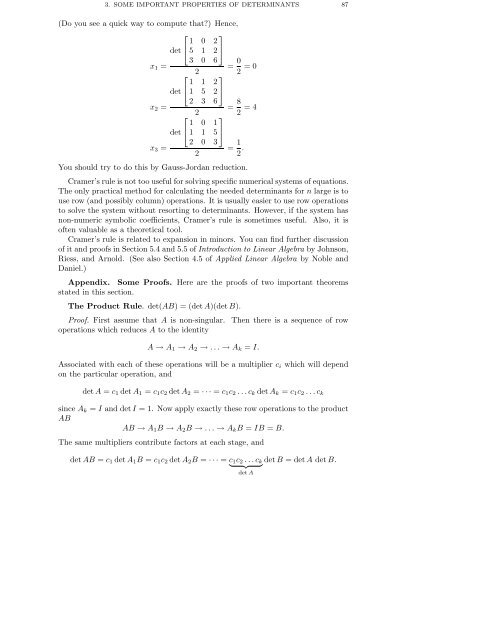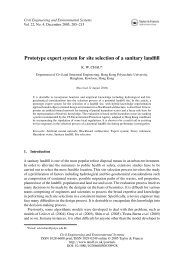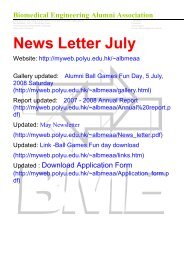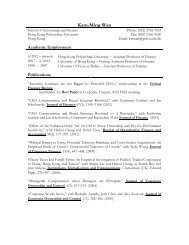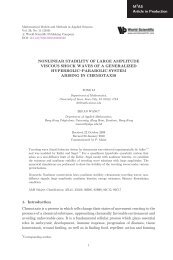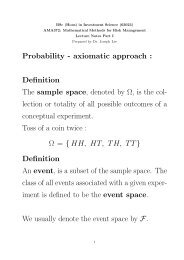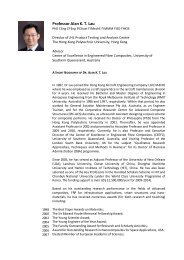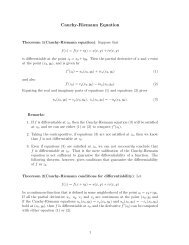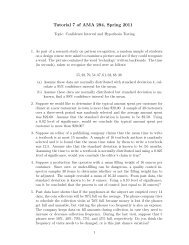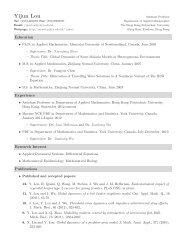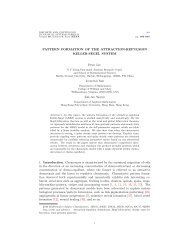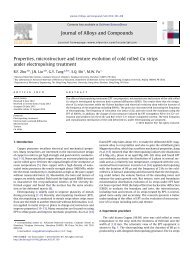DETERMINANTS AND EIGENVALUES 1. Introduction Gauss ...
DETERMINANTS AND EIGENVALUES 1. Introduction Gauss ...
DETERMINANTS AND EIGENVALUES 1. Introduction Gauss ...
You also want an ePaper? Increase the reach of your titles
YUMPU automatically turns print PDFs into web optimized ePapers that Google loves.
3. SOME IMPORTANT PROPERTIES OF <strong>DETERMINANTS</strong> 87(Do you see a quick way to compute that?) Hence,⎡det ⎣ 1 0 2⎤5 1 2⎦3 0 6x 1 == 0 2 2 =0⎡det ⎣ 1 1 2⎤1 5 2⎦2 3 6x 2 == 8 2 2 =4⎡det ⎣ 1 0 1⎤1 1 5⎦2 0 3x 3 == 1 2 2 .You should try to do this by <strong>Gauss</strong>-Jordan reduction.Cramer’s rule is not too useful for solving specific numerical systems of equations.The only practical method for calculating the needed determinants for n large is touse row (and possibly column) operations. It is usually easier to use row operationsto solve the system without resorting to determinants. However, if the system hasnon-numeric symbolic coefficients, Cramer’s rule is sometimes useful. Also, it isoften valuable as a theoretical tool.Cramer’s rule is related to expansion in minors. You can find further discussionof it and proofs in Section 5.4 and 5.5 of <strong>Introduction</strong> to Linear Algebra by Johnson,Riess, and Arnold. (See also Section 4.5 of Applied Linear Algebra by Noble andDaniel.)Appendix. Some Proofs. Here are the proofs of two important theoremsstated in this section.The Product Rule. det(AB) = (det A)(det B).Proof. First assume that A is non-singular. Then there is a sequence of rowoperations which reduces A to the identityA → A 1 → A 2 → ...→A k =I.Associated with each of these operations will be a multiplier c i which will dependon the particular operation, anddet A = c 1 det A 1 = c 1 c 2 det A 2 = ···=c 1 c 2 ...c k det A k = c 1 c 2 ...c ksince A k = I and det I = <strong>1.</strong> Now apply exactly these row operations to the productABAB → A 1 B → A 2 B → ...→A k B =IB = B.The same multipliers contribute factors at each stage, anddet AB = c 1 det A 1 B = c 1 c 2 det A 2 B = ···=c 1 c 2 ...c} {{ k det B = det A det B.}det A


